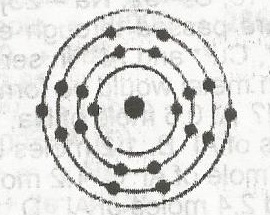The diagram above represents an atom that can combine wit...

The diagram above represents an atom that can combine with chlorine to form
a covalent bond
an electrovalent bond
a hydrogen bond
a co-ordinate bond
Correct answer is B
No explanation has been provided for this answer.
Similar Questions
Consider the following reaction equation: CaO + SiO2 ------> CaSiO3 Silicon(IV) o...
One advantages of detergents over soap is that detergents? ...
Which of the following reactions is accompanied by the first ionization energy of an element X? ...
In which of the following compounds is the oxidation number of nitrogen equal to + 3?...
A dense white fume is formed when ammonia gas reacts with ...
A gas occupies 30.0 dm3 at S.T.P. What volume would it occupy at 91oC and 380 mm Hg?...
Determine the volume of 0.100 mol of HCl in 0.250moldm3 of solution....